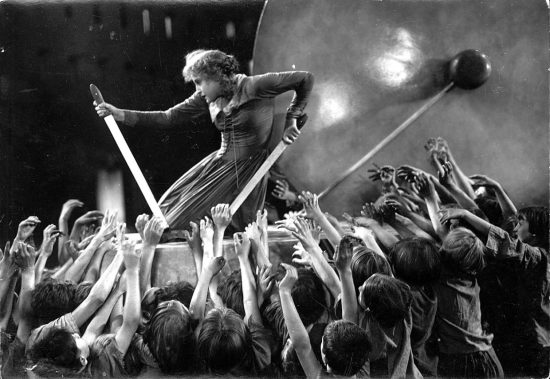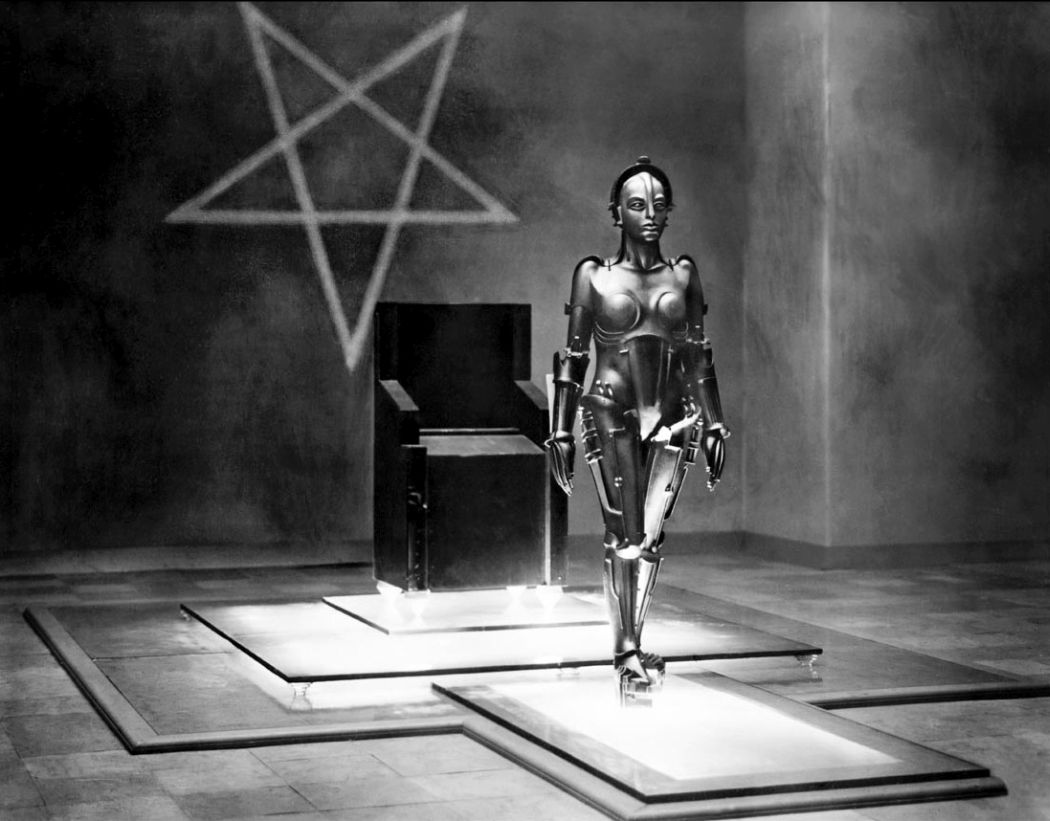Late To The Party: Metropolis – “Grand, expressive and iconic”
Late To The Party is a series of reviews ranging from classical masterpieces to modern-day blockbusters where I look to make my confession for the sin of not having seen them before. I seek absolution from the film universe and hope to never again suffer your disdain for my film faux pas. I am Fredo, in the boat. Hail Mary, full of grace.
The film is set in a futuristic towering city called Metropolis, where the wealthy live a life of decadent abandon afforded to them by the back-breaking labours of the workers who live underground in vast catacombs. As one working shift replaces another, armies of labourers trudge from their homes deep within the catacombs below the city to work and operate the 24 hour machinery that keeps the city alive, most important of which is the Heart Machine, run by the Guardian of the Heart Machine, Grot (Heinrich George). The film’s central character is Freder Frederson (Gustav Frolich), son of Metropolis’s master architect and ruler, Joh Fredersen (Alfred Abel). Freder’s carefree existence is disrupted when Maria (Brigette Helm) brings some of the impoverished children of the labourers above ground to see where the rich and powerful spend their time. Upon seeing her with the children, Freder’s life is changed and he abandons his luxurious life in search of Maria, against his father’s wishes.
While trying to keep tabs on his son, Joh Fredersen enlists the assistance of reclusive and insane scientist Rotwang (Rudolph Klein-Rogge) who is building a robot, a ‘machine-man’ in the image of his dead wife, whom also happens to be Freder’s mother, from an affair Joh had with her years ago.
Lang brings his expressionist sensibilities and grand visual style to science-fiction with astounding sets, backdrops and effects. It truly is a remarkable feat of technical skill and ingenuity to create such a believable and immersive city of the future. One can only begin to imagine the sense of awe and wonder an audience would have felt nearly 100 years ago, witnessing this film for the first time. Ernst Kunstman, who is credited as working special visual effects on the film, invented a process whereby actors were projected onto sets with the use of mirrors. This process was dubbed the ‘Schufftan Process’ and has been used right up to the modern-day in films such as Peter Jackson’s The Lord of The Rings Trilogy.
The performances, like the sets, are grand, expressive and iconic. Klein-Rogge is marvellous as the archetypal mad scientist Rotwang, bent on revenge for his dead wife. Heinrich George brings some much needed light relief as Grot, the Guardian of the Heart Machine and Gustav Frolich’s energy throughout is incredible as the male lead role, Freder. The indisputable star of the film, however, is Brigette Helm, who plays not only the saintly Maria, but also Rotwang’s robot turned android, the Machine Man. The range of her performance is breathtaking. From a humble, quasi-religious figure who tries to persuade the workers to wait for the one who will unite all the residents of Metropolis, to the evil agent provocateur android sent by Rotwang to stir up class hatred and insight violent revolution. Helm’s manic physicality as the android alongside her ability to express the human anguish and desperation of a moderate peace-loving woman trapped between warring extremes is at the heart of this film.
The set pieces of the film are still impressive enough to compete with modern-day blockbuster fare. From the gloriously over the top feeding of the machine sequence, the nightmarish fever-dream to the action-packed final act where whole sets were flooded and actors risked life and limb on bonfires, swinging on ropes at height to fight sequences on rooftops.
The shoot for the film lasted well over a year and employed hundreds of extras that through the expert, if not always safety conscious direction of Lang, gave the impression of thousands on a scale Cecil B Demille would have been impressed by. One particular sequence involved scores of children trapped in flooded streets where they were kept in the freezing cold waters for hours on end during the shoot. The frightened looks of anguish are not always an act during these scenes.
Upon release the film received a poor reception, some critics praised the spectacular visuals where many criticised it for its simplistic, naïve plot and long run time. It is fair to say, with the benefit of nearly a hundred years hindsight that if you’re looking to expressionist cinema in that era for nuanced and subtle storytelling, you’re probably looking in the wrong place.
The film also suffered from studio interference. In the UK it was edited down from the original two and a half hours to just over one hundred minutes. A similar fate befell it in the USA but with an added rewritten plot that made less sense, so not to offend American sensibilities on what was perceived to be socialist propaganda.
During the 1980s music producer Georgio Moroder released a cut of the film with a soundtrack composed by Moroder himself, with performances by singers including Pat Benatar, Adam Ant, Bonnie Tyler and Freddie Mercury.
The full 2 and a half-hour version was thought lost until it was announced in 2008 that negatives of the film had been found in Buenos Aires and in 2010 the full version was released. This version (as per this review) contains rough edits of lost scenes intercut with the completed, already available versions.
The film has had a wide influence on filmmakers and popular culture throughout the years. The creators of Superman named Metropolis after the film and it’s fair to say early examples of architecture within these comics are influenced by Metropolis. The design of Star Wars regular C-3PO is clearly influenced by the film’s ‘Man Machine’ character. Cityscapes throughout science-fiction films owe a huge debt of gratitude to Metropolis, from Dark City (1998), Blade Runner (1982) and Spielberg’s Minority Report (2002) to of course Terry Gilliam’s masterpiece, Brazil (1985). Gene Wilder’s sublime comic turn as the young Dr. Frankenstein in Mel Brooks’s near-perfect comedy Young Frankenstein (1974) owes as much to Rudolph Klein-Rogge’s mad-scientist Rotwang, as it does to Colin Clive’s Dr. Frankenstein (Senior) in James Whale’s Frankenstein (1931).
Although the film was made and released during the Weimar Republic period in Germany, the film was popular among Nazi party officials, seeing it as a National Socialist allegory and Lang was invited by Goebbels to make propaganda films for the party. Lang fled Nazi Germany initially to Paris and then on to America, where he made the ended up moving to America, where he worked for the rest of his life.
At two and a half hours long, which seems almost poultry in comparison to modern-day blockbusters, Metropolis may be a challenge for some to sit through. I, however, fell instantly in love with the sprawling and innovative visuals that riff on Art-Deco design with occasional nods to Brueghel. The melodramatic, vaudeville-influenced performances capture an era of film making from nearly a hundred years ago that we shall never see the likes of again. The soaring, relentless original musical score by Gottfried Huppertz still delights and immerses us in the fantastical world of Metropolis that I will repeatedly return to with great pleasure.
Metropolis is available to stream on the BFI Player via Amazon Prime Video.











